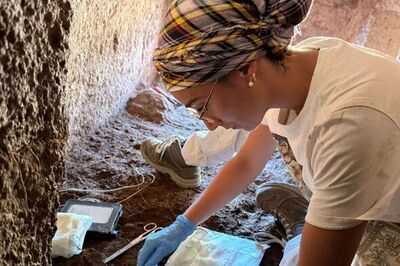
Fatty liver disease , medically known as non-alcoholic fatty liver disease (NAFLD), is one of the most common liver conditions worldwide. It occurs when excess fat builds up in liver cells, often linked to obesity, insulin resistance, poor diet, or a sedentary lifestyle. If left unmanaged, it can progress to inflammation (non-alcoholic steatohepatitis or NASH), fibrosis, and even cirrhosis. While medication options are limited, lifestyle changes, particularly regular exercise, have shown remarkable benefits in managing and reversing fatty liver disease. Let’s explore how physical activity helps protect and restore liver health.
Understanding what fatty liver disease is
Fatty liver disease is characterised by an abnormal accumulation of triglycerides within liver cells. It is often associated with conditions such as obesity, high cholesterol, type 2 diabetes, and metabolic syndrome. Early stages are usually silent, but over time, excess liver fat can cause inflammation, scarring, and impaired liver function. But NAFLD is largely reversible in its early stages through diet, weight management, and regular physical activity.
How exercise helps in fatty liver disease
According to a study published in the , exercise exerts multiple beneficial effects on the liver, even in the absence of major weight loss. Here are the key mechanisms by which physical activity improves liver health:
1. Reduces liver fat content
Engaging in regular aerobic or resistance exercise helps decrease the amount of fat stored in liver cells. This occurs because exercise enhances fat oxidation, the body’s ability to use fat as fuel, while reducing new fat production (lipogenesis).
2. Improves insulin sensitivity
Insulin resistance is a major driver of fatty liver disease. Exercise makes body cells more responsive to insulin, which reduces glucose levels in the blood and prevents fat accumulation in the liver.
3. Lowers liver enzymes
Elevated liver enzymes such as ALT (alanine aminotransferase) and AST (aspartate aminotransferase) are markers of liver stress. Regular exercise helps reduce these enzyme levels, indicating better liver function and reduced inflammation.
4. Promotes weight and fat loss
Even modest weight loss of 5–10% can significantly reduce liver fat. Exercise not only burns calories but also helps preserve lean muscle mass, making it easier to maintain a healthy body composition and metabolic rate.
5. Decreases inflammation and oxidative stress
Fatty liver disease is associated with chronic inflammation and oxidative damage. Exercise boosts antioxidant defences, decreases inflammatory markers, and improves overall cellular health, which supports liver recovery.
6. Supports cardiovascular and metabolic health
Since NAFLD often coexists with high cholesterol, high blood pressure, and diabetes, exercise benefits extend beyond the liver. It helps regulate blood lipids, stabilise blood sugar, and improve circulation, reducing overall disease risk.
Best types of exercise for fatty liver disease
Different forms of physical activity offer unique benefits. A balanced approach combining aerobic and resistance training tends to produce the best outcomes.
- Aerobic exercise
Activities like brisk walking, cycling, swimming, or jogging help burn fat and improve cardiovascular fitness. Performing at least 150 minutes of moderate-intensity aerobic activity per week has been shown to reduce liver fat and enhance metabolic health.
- Resistance training
Strength-based exercises such as weightlifting, bodyweight workouts, or resistance band training increase muscle mass and improve insulin sensitivity. These workouts also help maintain muscle while reducing fat.
- High-Intensity Interval Training (HIIT)
For those capable of higher-intensity activity, HIIT, alternating bursts of intense effort with recovery periods, can effectively lower liver fat and improve cardiovascular endurance in less time.
Recommended exercise routine for NAFLD
For optimal liver and metabolic health, consider the following weekly exercise plan:
- 150-300 minutes of moderate-intensity aerobic exercise (e.g., brisk walking, swimming, cycling)
- 2-3 sessions of resistance or strength training
- Include daily movement, such as walking, stretching, or light yoga, to minimise sedentary time
- Gradually increase intensity or duration for sustained improvement
Always consult a healthcare professional before starting a new exercise programme, especially if you have underlying health conditions.
Lifestyle tips to enhance results
- Adopt a balanced diet: Focus on whole grains, fruits, vegetables, lean proteins, and healthy fats.
- Limit sugar and processed foods: Excess sugar and refined carbs worsen fat buildup in the liver.
- Stay hydrated: Water supports liver detoxification and metabolism.
- Avoid alcohol and smoking: Both can worsen liver damage.
- Get adequate sleep: Poor sleep increases insulin resistance and fat storage.
Disclaimer: This article is for informational purposes only and is not a substitute for professional medical advice. Always consult a qualified healthcare provider for diagnosis, treatment, or personalised guidance.
-
Upcoming Release of RRB NTPC UG CBT 1 Exam Results

-
India Develops Its First Indigenous Antibiotic: A Hope for Cancer and Diabetes Patients

-
Karnataka LoP Ashoka tears into state govt over socio-economic survey

-
Huge breakthrough as three ancient 'fairy houses' found on hillside

-
POLL: Is Rachel Reeves right to blame Brexit for state of UK economy?
